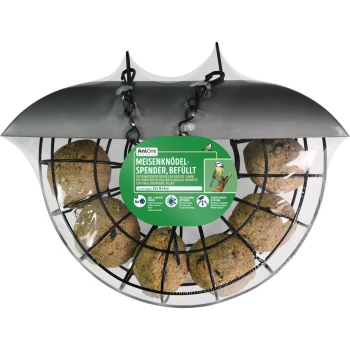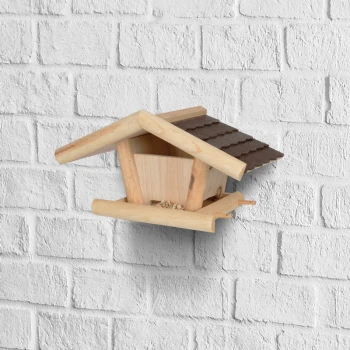Wild bird feed
Wild bird feed in the Maxi Zoo online shop
Wild bird feeding: a well-set table for songbirds
Blackbirds, thrushes, finch and starlings: they are all welcome guests in our gardens and on balconies. Their chirping, singing and sometimes also loud bickering creates a lively background noise. With an attractive environment for birds, you get the little singers closer to you. Wild birds particularly appreciate a reliable feeding site near humans. Lured by selected wild bird feed and a bird bath, you don’t have to wait long for feathered visitors. While the birds serve themselves, from a safe distance you have the opportunity to observe the colourful goings-on at the bird house and to study the behaviour of the birds: an intensive experience of nature in your own private environment.
How often should wild birds be fed?
In the cold season, wild birds find little food. For this reason, it is not surprising that many bird lovers would like to support their feathered friends. But how much food is good? Make sure that there is always enough wild bird food available in the bird house. A handful of sprinkled food is usually enough for a small bird house. For larger houses, it can be two or three handfuls. Add a small amount of fresh sprinkled food to the bird house or feed dispenser every day. A mixture of sunflower seeds, flakes, peanuts and various seeds is particularly popular with many native bird species. This mixture is ideal for all-year-round feeding. Suet cakes, which provide a high-energy diet with many natural vitamins, are also ideally suited for year-round feeding.
Which feed for wild birds is suitable?
Adjust the wild bird food to the seasons. Depending on the season, the need for nutrients that should be contained in the loose food for garden birds changes. While the birds have an increased fat requirement on cold days, they need more protein in spring and summer. Food for wild birds from manufacturers such as MulitFit, PREMIERE or Versele-Laga take this into account in the composition of summer scattering food and bird feed in winter. For example, if the temperatures fall below freezing point, birds reach for fatty food. This is often enriched with soybean oil and provides enough energy on cold winter days for chaffinches, robins and thrushes, for example. Wild birds are also dependent on different types of feed. In general terms, a distinction is drawn between grain and soft foods. Natural goldfinch food therefore has different components from blackbird food. Scattered food mixtures contain something suitable for all birds.

